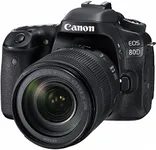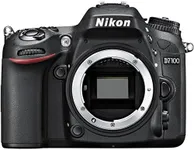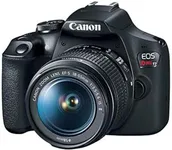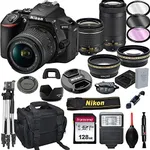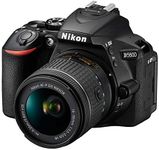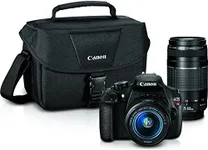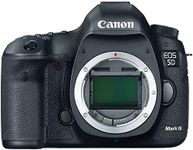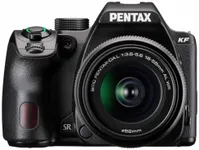Buying Guide for the Best Digital Slr Cameras
Choosing the right digital SLR (DSLR) camera can be a rewarding experience, especially if you know what to look for. DSLRs are known for their versatility, image quality, and the ability to change lenses to suit different photography needs. When selecting a DSLR, it's important to consider your photography goals, whether you're a beginner, enthusiast, or professional. Understanding the key specifications will help you make an informed decision that matches your needs and preferences.Sensor SizeThe sensor size in a DSLR camera is crucial because it affects the image quality, depth of field, and low-light performance. Larger sensors, like full-frame sensors, capture more light and detail, making them ideal for professional photography and low-light conditions. APS-C sensors are smaller but still offer excellent image quality and are more affordable, making them suitable for enthusiasts and beginners. Consider what type of photography you will be doing; if you need high detail and better performance in low light, a larger sensor is preferable.
MegapixelsMegapixels refer to the resolution of the camera's sensor, indicating how many millions of pixels the camera can capture. Higher megapixels mean more detail in your images, which is beneficial for large prints or cropping. However, more megapixels also mean larger file sizes. For most users, a camera with 16-24 megapixels is sufficient, providing a good balance between image quality and file size. If you are a professional or need extremely high detail, you might consider cameras with 30+ megapixels.
ISO RangeThe ISO range of a camera determines its sensitivity to light. A wider ISO range allows for better performance in various lighting conditions, from bright daylight to low-light environments. Cameras with higher ISO capabilities can capture clearer images in low light without needing a flash. For general use, an ISO range of 100-6400 is typically sufficient. If you often shoot in low-light conditions, look for a camera with an extended ISO range, such as 100-25600 or higher.
Autofocus SystemThe autofocus (AF) system in a DSLR camera is important for capturing sharp images, especially in fast-moving or dynamic scenes. A more advanced AF system with more focus points and faster focusing speeds will help you achieve better accuracy and reliability. For casual photography, a basic AF system with fewer focus points may be adequate. However, if you are into sports, wildlife, or action photography, look for a camera with a sophisticated AF system that includes features like phase detection and multiple focus points.
Continuous Shooting SpeedContinuous shooting speed, measured in frames per second (fps), indicates how many images a camera can take in a burst. This is particularly important for capturing fast-moving subjects, such as in sports or wildlife photography. Entry-level DSLRs typically offer around 3-5 fps, which is sufficient for general use. Enthusiast and professional models may offer 7-10 fps or higher, providing better performance for action shots. Consider your photography style and whether you need high-speed continuous shooting.
Video CapabilitiesMany DSLRs offer video recording capabilities, which can be a valuable feature if you plan to shoot videos in addition to still photos. Look for the resolution and frame rates the camera supports; Full HD (1080p) is common, but 4K resolution is becoming more popular for higher quality. Also, consider additional features like microphone input, autofocus during video, and image stabilization. If video is a significant part of your work, prioritize these features to ensure good video quality and ease of use.
Build Quality and ErgonomicsThe build quality and ergonomics of a DSLR camera affect how comfortable and durable it is to use. Cameras with a robust, weather-sealed body are better suited for outdoor and rugged use. Ergonomics, including the grip and button layout, are important for handling and ease of use. Try holding different cameras to see which feels most comfortable in your hands. If you plan to shoot in challenging environments or for extended periods, prioritize a camera with good build quality and ergonomics.
Lens CompatibilityOne of the main advantages of DSLRs is the ability to change lenses. Ensure the camera you choose is compatible with a wide range of lenses that suit your photography needs. Consider the availability and cost of lenses for the camera brand you are interested in. If you have specific photography interests, such as macro, portrait, or landscape, check that there are suitable lenses available. Investing in a camera with a versatile lens ecosystem will allow you to expand your capabilities over time.
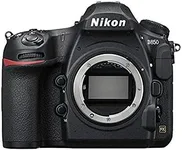
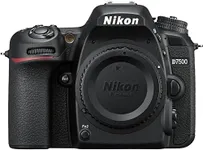
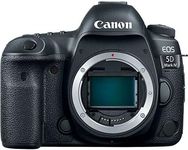
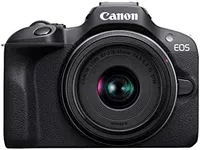
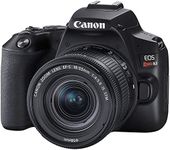
![Canon DSLR Camera [EOS 90D] with Bu](https://images-proxy.bestreviews.guide/kFEi5KP2PYJ3wMXMQ_Zv7U27skM=/0x150/https://m.media-amazon.com/images/I/41CT8Bz8kQL._AC_CX679_.jpg)

